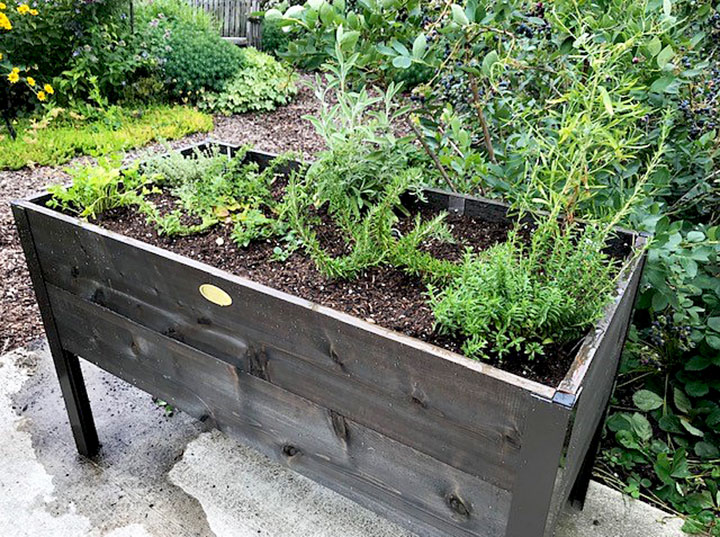May 22 Column: Adaptive Gardening

If you’re not familiar with the term “adaptive gardening,” it refers to the use of specialized tools or methods so a person can garden more comfortably and safely. If you’re picturing elderly gardeners, be aware that this concept can help folks with injuries or other physical limitations at any stage of their life.
Adaptive gardening is the topic of my garden column. You can read it in today’s edition of The Spokesman-Review: The right tools make gardening accessible to all. Or you can read the text of my column underneath the video below.
For this week’s video, I decided to stick with adaptive gardening as the subject. I thought it’d be helpful to show you different types of tools and equipment that help me garden comfortably. It’s my hope that you – or someone you know who is struggling with the physical aspects of gardening – will find some useful ideas.
Here is my garden column:
by Susan Mulvihill
Gardening can be such a delightful and rewarding pastime. If you’ve been pursuing this activity for a long time, don’t forget to take care of yourself.
The aging process and injuries can take the fun out of the gardening activities we’ve always enjoyed. You may find that you have less strength in your hands or that kneeling is a challenge. Perhaps you need to use a walker now or you are confined to a wheelchair. The great news is that you can still grow a garden with a few adaptations.
In recent years, garden suppliers have been designing new tools and equipment to make this happen. It is so gratifying to see this trend. Many pruning tools have comfortable grips and ratcheting systems to reduce the amount of strength needed to make pruning cuts. Some tools have telescoping handles that will increase your reach. If you’re in need of a trowel, look for models with ergonomic handles that reduce the amount of strain on your wrist.
I find that repeatedly getting up and down is really hard on my hips during a session of weeding and planting. Kneeler benches have become my favorite tool because they serve two functions. When I utilize mine as a kneeler, I grasp the handles and use my arms to lower myself down onto it and push myself back up again. If I need to work in one place for a time-consuming task such as picking blueberries, I can flip it over and turn it into a small bench. Sitting is much more comfortable than bending over.
Raised beds or galvanized planters that are 30 to 36 inches tall are ideal for gardeners who use walkers or wheelchairs. They eliminate the need for bending, which is a real energy-saver. They are usually quick to set up and once the soil is in, you’re ready to go. Because wheelchair users have a shorter reach from a sitting position, the bed should be narrower or accessible from all sides.
Be kind to your back and arms by using a small container for carrying seedlings, supplies, or uprooted weeds. Consider purchasing smaller size bags of fertilizers and other garden products. We might feel pretty energetic at the start of the day but after repeatedly carrying and lifting heavy items, that really takes a toll on us. Wheelbarrows or garden carts are great solutions but don’t overload them.
Pace yourself by taking stock of the tasks on your list and breaking them up into small chunks. Rotate between different types of activities so you alternate between using different muscles in your body. Regulate the amount of time overall so you don’t wear yourself out. Many experts recommend setting a timer for about 20 minutes and then taking a break.
In addition to addressing how to accomplish tasks you want to do, it’s important to assess how your garden is set up. Sometimes it becomes necessary to rearrange things a bit to eliminate a tripping hazard, for example. Are your garden tools and pots stored conveniently so they’re easy to get to? If you have steps in your garden, is there a hand rail to hold onto? These are all important considerations.
Above all, don’t be bashful about asking for help. Family members and neighbors are usually more than willing to assist you with the challenging tasks. With a little bit of forethought and the right tools, it’s possible to keep the joy in gardening for yourself and those you love.
Susan Mulvihill is author of “The Vegetable Garden Pest Handbook.” She can be reached at Susan@SusansintheGarden.com. Learn more about helpful tools in this week’s video at youtube.com/susansinthegarden.

